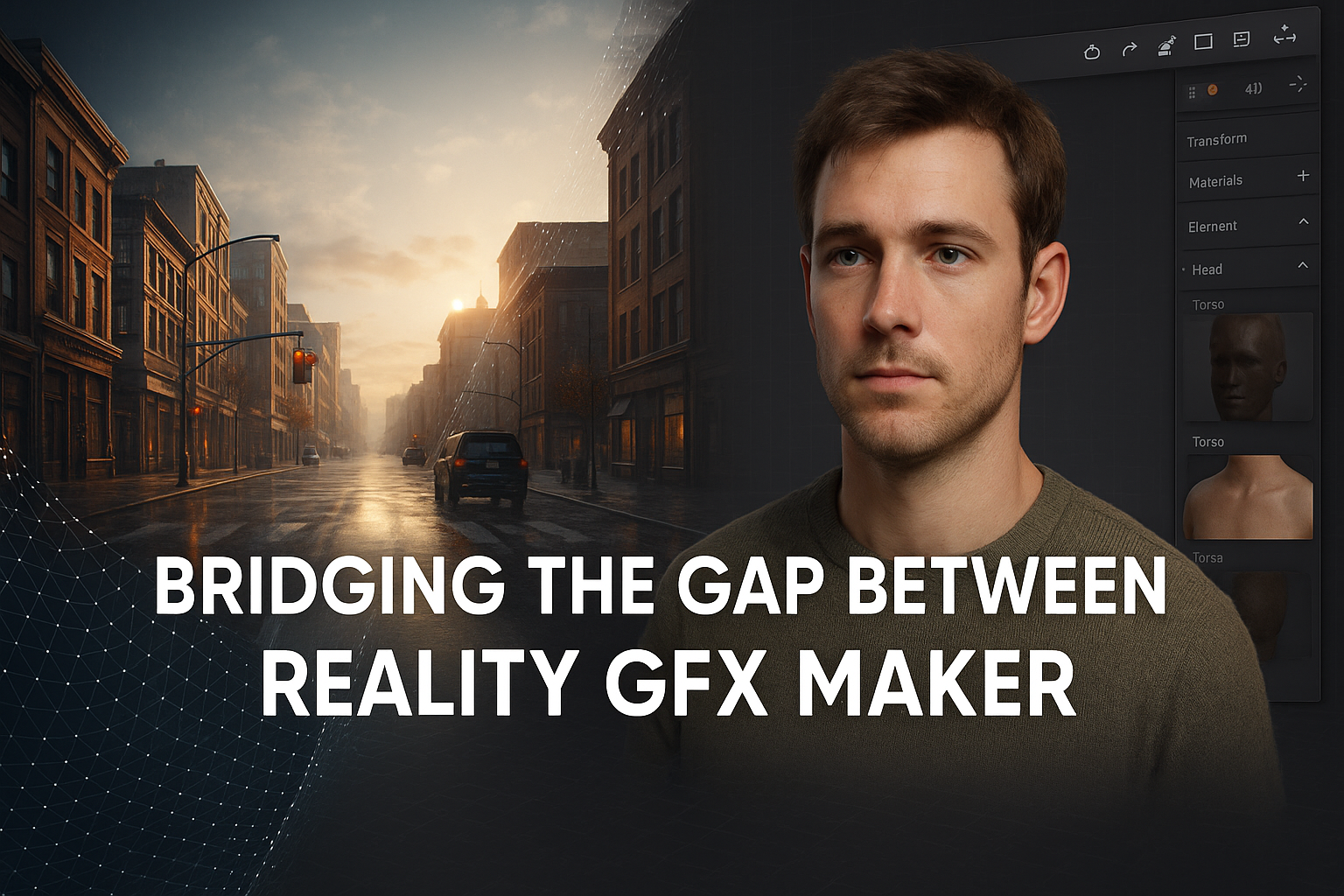Introduction: Bridging the Gap Between Reality GFX Maker
In the ever-evolving world of digital visual content, the pursuit of hyperrealism has become the holy grail. “Bridging the Gap Between Reality GFX Maker” represents a technological and artistic initiative aimed at narrowing the divide between digitally created visuals and real-world environments. With the increasing demand for lifelike digital imagery in gaming, film, architecture, and marketing, graphic designers and developers are seeking innovative tools to blur the lines between simulation and reality.
What Does Bridging the Gap Between Reality GFX Maker Exactly Mean?
Bridging this gap involves harnessing software and hardware to create graphics that are indistinguishable from real-life visuals. It combines advanced rendering techniques, photorealistic textures, ray tracing, AI integration, and real-time physics to make virtual environments more believable. “Reality GFX Maker” refers to tools or platforms that focus on high-end realism in digital content creation, often powered by cutting-edge engines and sophisticated design algorithms.
The Advancement of Graphic Design
From static 2D illustrations to immersive 3D environments, graphic design has come a long way. The digital design landscape has evolved to include virtual reality (VR), augmented reality (AR), and real-time 3D modeling. Artists and developers are no longer limited to canvas and screen; instead, they now design interactive worlds that can be explored and manipulated just like the physical one.
Starting Days: From Pixel to Perception
The roots of digital graphics were modest. Early computer-generated images relied on basic pixel arrangements and limited color palettes. Programs like MS Paint or early versions of Photoshop offered restricted creative control. However, these humble beginnings paved the way for a technological revolution in visual computing, driven by ever-improving computational power and software innovation.
The Emergence of Three-Dimensional Graphics
The introduction of 3D modeling changed the game. Software like Autodesk Maya, Blender, and 3ds Max allowed artists to sculpt and animate detailed models with volume, texture, and depth. What began as rudimentary wireframes gradually transformed into complex, emotionally evocative scenes. Realistic lighting, shadows, and camera effects began to replicate the physics of light and material interaction.
Rendering in Real-Time and Game Development Engines
One of the most significant leaps in bridging the gap came with the integration of real-time rendering in engines such as Unreal Engine and Unity. These platforms provide the capability to visualize changes instantly, simulating real-world physics and photorealistic visuals in a dynamic environment. Ray tracing, global illumination, and post-processing effects bring cinema-grade visuals into video games and virtual worlds.
Fundamental Technologies for Closing the Divide
Several key technologies have made the vision of true realism achievable:
- Ray Tracing: Simulates the way light interacts with surfaces, creating natural reflections and shadows.
- Photogrammetry: Converts real-world photos into 3D models with accurate textures and scale.
- AI and Machine Learning: Enhance resolution, fill in detail, and automate rendering processes.
- PBR (Physically Based Rendering): Ensures that materials behave under lighting in a realistic manner.
- Volumetric Rendering: Simulates clouds, smoke, fog, and other atmospheric effects realistically.
Sectors Paving the Path
Multiple industries are accelerating the integration of reality GFX makers:
- Gaming: AAA titles now prioritize realism for player immersion.
- Film and Animation: Virtual production techniques allow filmmakers to shoot scenes within digital sets.
- Architecture and Real Estate: Clients can walk through photorealistic models of buildings before construction.
- Healthcare: Medical visualization now allows practitioners to simulate surgeries and anatomy.
- Automotive: Digital twins of vehicles are used for testing aerodynamics and interior aesthetics.
Overcome Challenges Facing in Bridging the Gap Between Reality GFX Maker
Despite breakthroughs, several challenges persist:
- Hardware Limitations: Realism demands substantial processing power, often inaccessible to smaller creators.
- High Skill Requirement: Mastery of tools like Blender or Unreal Engine takes time and experience.
- Rendering Time: High-quality outputs still require significant rendering durations.
- Cost: Advanced software and plugins can be expensive.
- Compatibility Issues: Standardizing file formats and asset pipelines remains a hurdle.
The Future Update of Bridging the Gap
The future promises exciting updates:
- Cloud-Based Rendering: Leveraging cloud GPU farms for faster and more accessible rendering.
- Augmented Reality Integration: Making real-world and digital visuals seamlessly interactive.
- Neural Rendering: AI will play a larger role in automating and enhancing image synthesis.
- Web3 and Virtual Spaces: Decentralized digital environments (Metaverse) will demand ultra-realistic visuals.
- Accessible Design Tools: Simplified interfaces using AI to guide novice users in professional-level creation.
Practical Illustrations
Some real-world applications illustrating the bridge between graphics and reality include:
- MetaHuman Creator by Epic Games: Enables the design of lifelike digital humans.
- The Mandalorian’s Virtual Sets: Uses Unreal Engine to render backdrops in real-time.
- NVIDIA Omniverse: A platform that merges different tools for collaborative, ultra-realistic design work.
- Google’s AR Core and Apple’s ARKit: Provide frameworks to blend virtual objects into live camera feeds.
Guidelines for Emerging Graphic Designers
To succeed in this realism-driven design era:
- Master the Basics: Learn 3D modeling, lighting, and texturing fundamentals.
- Experiment with Engines: Gain fluency in Unity, Unreal Engine, and Blender.
- Stay Updated: Follow trends in AI, cloud computing, and GPU development.
- Build a Portfolio: Showcase photorealistic renders across sectors.
- Engage with Communities: Participate in challenges, forums, and learning platforms like ArtStation and CGSociety.
Concluding on Bridging the Gap Between Reality GFX Maker
The journey to perfectly blend digital graphics with physical reality is both a technological mission and an artistic endeavor. Bridging the gap between reality and graphic creation is not about replacing the real world—it’s about enhancing our interaction with it. As tools become smarter and more accessible, designers from all backgrounds will be able to participate in building the hyperreal future. The era of “Reality GFX Maker” is not just approaching—it is unfolding before our eyes.


